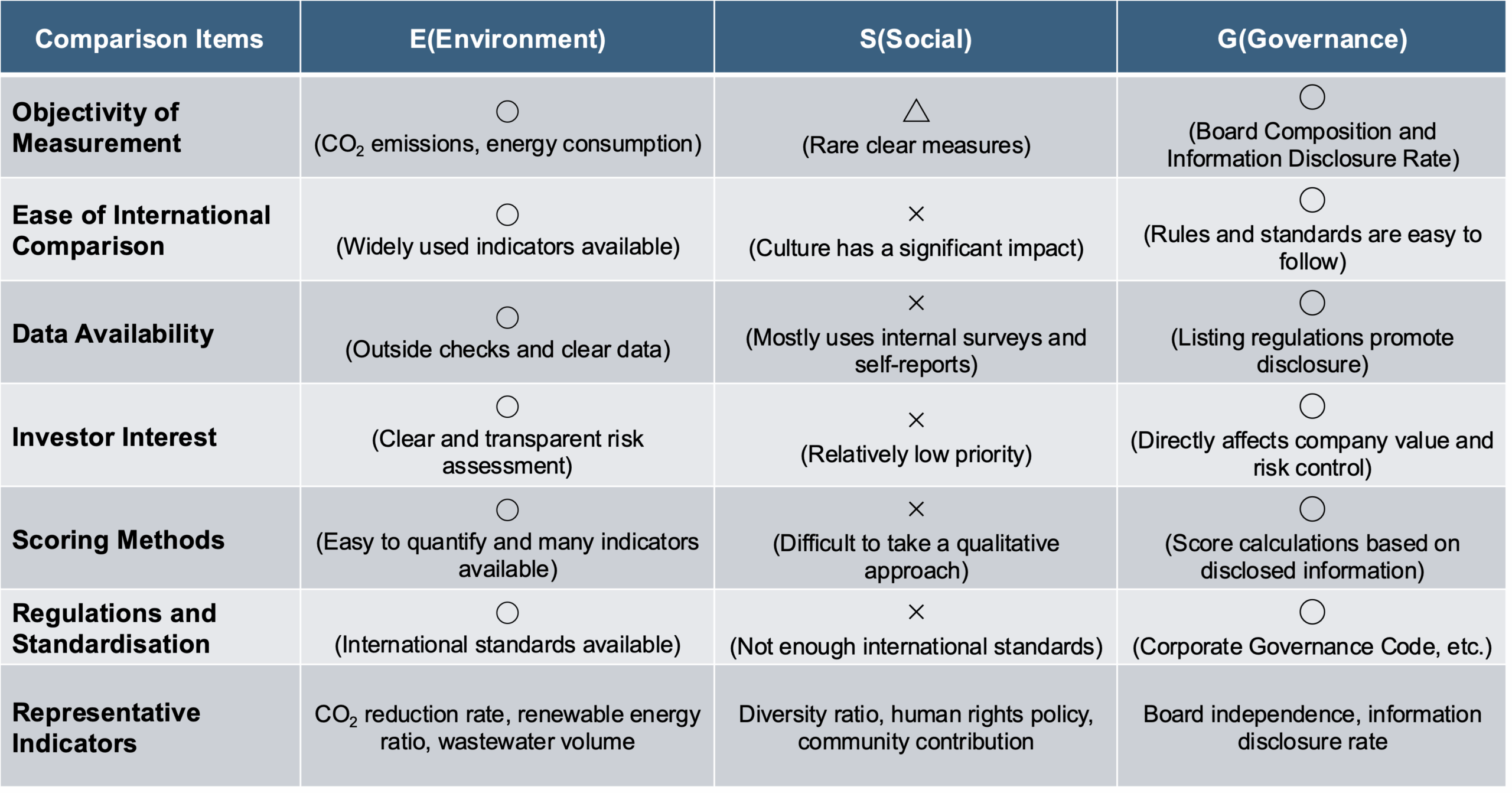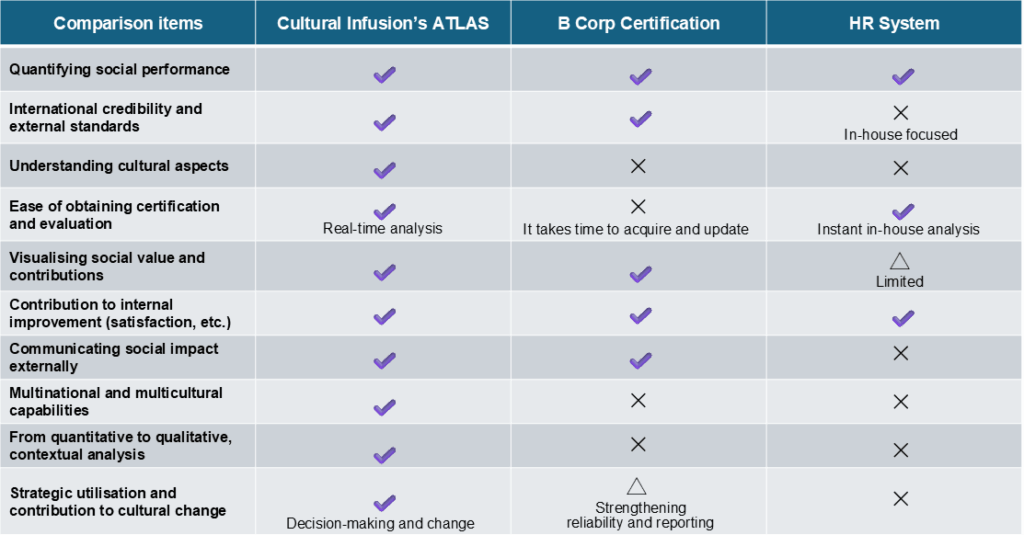
Rin Ishii
Rin Ishii is a research intern at Cultural Infusion. He is studying a wide range of subjects across various fields — from SDGs and psychology to basic chemistry and radiation physics — to develop the ability to think beyond the boundaries of the humanities and sciences, aiming to solve social issues and create new value.Why and What Are ESGs and SDGs
The world today faces an unavoidable challenge: sustainability. As environmental damage, social inequality, and human rights issues become more serious, investors, consumers, and governments are putting increasing pressure on companies to balance sustainability with long-term value. In this context, two key concepts have emerged: ESG and SDG.
ESG, a term formally embraced by the United Nations since 2004, stands for Environmental, Social, and Governance. It is a framework that evaluates corporate activities from these three perspectives, helping investors and markets judge a company’s sustainability.
SDGs, or Sustainable Development Goals, are a set of global goals established by the United Nations in 2015 to address social and environmental issues worldwide. Companies contribute to achieving the SDGs by managing their businesses responsibly through ESG practices.

However, the ‘S’ in ESG – Social – is often overlooked. While environmental and governance issues are easier to measure and have received more attention, social aspects are harder to quantify. As a result, issues such as improving working conditions, respecting human rights, and promoting diversity tend to be postponed in corporate analysis and investment decisions. This neglect prevents companies from fully addressing social challenges.
Comparing E, S and G Evaluation Methods
ESG evaluates corporate activities from the three perspectives of environment, society and governance. Environmental issues, such as carbon emissions, energy use, and renewable energy adoption, are relatively easy to measure. Before ESG, companies had limited understanding of their environmental impact and few concrete measures. Since ESG, companies track emissions reduction and resource efficiency, improving regulatory compliance and brand value.
Governance covers transparency, compliance, internal controls, and information disclosure. Before ESG, weaknesses in these areas reduced trust from investors and society. Since ESG, reporting systems and compliance have strengthened, increasing credibility and allowing investors to assess risks properly.
Social includes labour conditions, human rights, diversity and inclusion, and community engagement. These are harder to measure due to cultural and national differences and lack of agreed standards of measurement. Even since ESG, social initiatives are often under-evaluated, and companies may face limited pressure to improve. While some aspects, like enhancing employee satisfaction or brand value, show positive efforts, social issues on the whole remain less prioritised.
To achieve sustainability, companies need better evaluation standards and greater recognition of social performance.

The Current State of ESG Around the World
The evaluation of the ‘S’ (social) aspect of ESG has changed significantly since the pre-ESG era. Previously, social considerations were limited to corporate social responsibility (CSR) activities and legal compliance, and companies relied primarily on voluntary initiatives. However, with the rise of ESG frameworks, international standards require companies to clarify and institutionalise corporate social responsibility. For example, Toyota Motor Corporation has established a ‘Human Rights Policy’ and ‘Supplier Sustainability Guidelines’ to ensure respect for human rights throughout its supply chain. It has also introduced programs for childcare and elderly care support, remote work, and LGBTQ+ inclusion.
B Corp (short for Benefit Corporation) Certification, created in 2006 by nonprofit organisation B Lab and of increasing significance in global business, provides a means to quantify social value and increases transparency of progress and challenges to external stakeholders. Human resources policies and employee surveys also provide tools for measuring diversity, equity, and work-life balance, increasing the visibility of companies’ social contribution activities.
Despite these advances, significant challenges remain. First, policies and programs are often ineffective, and discrimination in hiring and promotion can persist or be shifted from one group to another when intersectionality is applied selectively. Most organisations fail to understand the importance of a holistic data-driven approach. Second, employee happiness and satisfaction are highly dynamic, yet most surveys are conducted annually or less frequently, limiting their relevance. More frequent and adaptive monitoring is needed. Third, qualitative aspects such as dignity, belonging, and life satisfaction are difficult to capture with quantitative indicators, and high scores do not necessarily reflect true happiness.
In other words, ESG has developed ‘institutional sociality’ (formal policies, rules, and systems that demonstrate corporate responsibility). However, most fail at measuring the full diversity of an organisation and capturing ‘experiential sociality’ (the actual feeling of belonging, dignity, and satisfaction in the workplace). Future assessments combining quantitative and qualitative approaches would increase transparency and build more robust systems that reflect employee voices.
The Power and Risk of the ‘S’ in ESG
When companies ignore the ‘S’ in ESG, serious problems can quickly become apparent. Human rights violations and labor issues can lead to criticism, social media backlash, and even global boycotts. Insufficient efforts on diversity and work-life balance can alienate young, talented people who value fairness and inclusion. Global partners now demand strict ESG standards, and companies that fail to meet them may be excluded from their supply chains.
However, simply promoting ‘S’ alone is not necessarily safe. Inherently ineffective diversity programs and community contributions can be seen as empty promises and lose credibility. Cultural differences also matter. What is praised in one country may be criticised in another, potentially creating friction between global companies. Furthermore, social factors such as employee well-being, corporate culture, and community impact are difficult to measure, making it difficult for investors to fairly evaluate them.
As such, the ‘S’ has two sides: inaction carries risks, but action can introduce new risks. To move forward, companies need better ways to measure and demonstrate their social impact.
Cultural Infusion’s Atlas vs Other Solutions
Existing methods for assessing the ‘S’ (social) aspects of ESG, such as B Corp Certification and human resource (HR) metrics, focus primarily on quantifying a company’s social performance. B Corp provides a strong, internationally recognised external standard to enhance a company’s credibility. However, achieving and maintaining certification takes time, and often fail to capture cultural aspects.
Typical HR metrics, such as employee satisfaction and diversity indicators, are useful for internal improvements but have limited ability to demonstrate social impact externally or fully understand the social and cultural context in which a company operates.
Cultural Infusion’s Atlas is a data-driven platform that visualises and analyses cultural and demographic diversity to inform inclusion and social cohesion strategies. Unlike traditional tools, Atlas offers a high resolution inventory of an organisation’s cultural diversity and how this corresponds to its external stakeholders, and provides real-time insights.
The Atlas’s new People and Culture Index (PCI) includes a representation metric, giving organisations clear benchmarks for how they relate to the communities they serve, as well as insights into their own staff’s perspectives on culture, talent, leadership, and data depth. It can also identify perception gaps between how leadership views the organisation and how staff experience it, so it can raise awareness among employees of the organisation’s positive actions across ESG initiatives.
Through its sophisticated methodology and definition of cultural diversity, Atlas helps companies understand and integrate social aspects into their strategies. This approach enables organisations to go beyond mere reporting and certification to guide decision-making, shape actions, and support meaningful culture change. For example, companies can identify areas of strength and weakness in inclusion, and evaluate the impact of their efforts in real time. While traditional methods measure social impact unevenly, Atlas gives companies the high-quality data and insights necessary to understand, act, and improve their socially responsible practices, bridging the gap between numbers and culture and making social performance a strategic asset rather than just a compliance requirement.

Proposals to Strengthen the ‘S’ in ESG
Given the challenges and limitations described above, companies can take several steps to strengthen the social dimension of ESG.
Combining quantitative and qualitative indicators: In addition to traditional HR metrics and B Corp Certification, understanding where traditional HR metrics may be insufficient or even damaging and then ensuring HR metrics adopt a holistic, scientific approach to measuring and managing diversity and inclusion.
Regularly collecting employee feedback and utilising workshops and anonymous surveys to reflect actual experiences and opinions.
Aligning initiatives with local cultures and contexts: designing social initiatives based on local priorities and analysing discrepancies and incorporating them into broader strategies.
Ensuring transparency and continuous improvement: Sharing progress, challenges, and KPI results builds stakeholder trust and allows for flexible improvement.
Linking philanthropy to core business strategies: Linking philanthropy to employee engagement, brand value, and customer loyalty transforms philanthropy from a mere obligation to a strategic asset.
Leveraging technology and data: Collaborating with NGOs, local communities, and other companies and leveraging technology can increase the effectiveness and efficiency of philanthropy.
By implementing these measures, companies can transform compliance and reporting into a meaningful and strategic approach to social initiatives.
‘S’ Future Role
Sustainability is now a core corporate imperative, with ESGs and the SDGs serving as key frameworks for guiding responsible business. However, social (S) dimensions remain some of the most challenging to assess. Unlike environmental (E) and governance (G) dimensions, which rely on metrics like emissions and compliance, social issues encompass areas like human rights, labour, diversity, and community engagement, which are difficult to quantify and often overlooked. This neglect exposes companies to serious risks, including reputational damage, talent loss, and exclusion from global supply chains. At the same time, poorly planned philanthropic efforts can be dismissed as mere tokenisms that expose the complexity of S.
Existing tools, like B Corp Certification and HR metrics, provide structure but often fail to capture the deeper cultural and experiential dimensions of philanthropic efforts. Cultural Infusion’s Atlas bridges this gap with high-quality quantitative metrics and qualitative metrics. By integrating organisational policies with a full picture of the cultural diversity of employees, Atlas helps companies move beyond compliance to strategy and achieve meaningful culture change.
Ultimately, by placing equal importance on the ‘S’ as the ‘E’ and ‘G,’ and adopting best practice, companies can mitigate risk, strengthen trust, and effectively contribute to a sustainable and inclusive society.